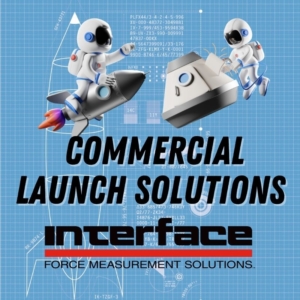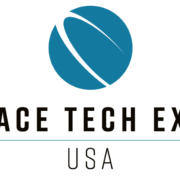Interface Explores Commercial Launch Solutions
 Interface supplies advanced sensor technologies to high-profile companies in some of the most challenging environments, including those that are using their innovations for exploration beyond planet earth.
Interface supplies advanced sensor technologies to high-profile companies in some of the most challenging environments, including those that are using their innovations for exploration beyond planet earth.
Aerospace commercial launch programs have a critical role in advancing our understanding of the world around us, as well as in supporting a wide range of industries and applications. Commercial launch is typically defined by engineers and aerospace market leaders as the design, manufacturing, and operation of rockets and spacecraft for commercial purposes. This includes providing launch services to customers such as private companies, governments, and research institutions.
Collaborating with engineers and market leaders at the forefront of the commercial launch industry, Interface is proud to take part in enabling space exploration and satellite deployment for a wide range of use cases. Commercial launch has a big part of our global economic growth for scientific research, environmental monitoring, communications, and national security.
Force measurement devices are critical tools for commercial launch companies, helping ensure the safety and effectiveness of spacecraft and rockets during design, testing, and launch. Interface high-accuracy load cells, torque transducers, load pins and wireless instrumentation are utilized throughout testing phases of aerospace vehicles, small and large. Interface products are used by commercial launch companies for a range of applications, including:
Rocket and Engine Testing: Load cells and force measurement devices are used to measure the thrust and other forces generated by rocket engines during testing. This information is critical for ensuring that the engine is operating safely and as designed. Read
Launch Vehicle Testing: Load cells and force measurement devices are used during testing of the launch vehicle to measure the loads and stresses that it will experience during launch. This helps ensure that the rocket is designed to withstand the forces it will encounter during launch.
Payload Integration: Load cells are used to measure the weight and balance of the payload during integration into the rocket. This helps ensure that the rocket is properly configured for launch and that the payload is secure.
Parachute Deployment: Load cells are used to measure the forces generated during parachute deployment and landing. This helps ensure that the parachute system is designed to deploy safely and effectively. See Parachute Deployment and Deceleration Testing
Spacecraft Separation: Load cells are used to measure the forces generated during spacecraft separation from the launch vehicle. This helps ensure that the spacecraft is safely released from the rocket and that it is on its intended trajectory.
Force measurement plays an important role in space exploration and commercial launches, including vehicle designs, automation of machines that manufacture components, structures used for launch testing, and the actual engineering and building of the spaceships. See our case study, Force Measurement for Space Travel.
With the growing investments in commercial space applications, Interface solutions are in high demand for testing in vehicles in launch environments. Interface products are used in thrust testing, structural testing, and even force gravity testing. Every test must be verifiably accurate due to the trustworthiness and safety requirements of moving the ever-increasing valuable payloads, which is beyond stellar communication technologies. It’s now about launching and returning humans, with frequency, in the new era of space travel. Safety is priority number one., Here are a few application examples of Interface solutions utilized by commercial launch market leaders.
Rocket Structure Testing
NASA’s Space Launch System (SLS) core stage is largest ever built at 27 feet in diameter and 200+ feet tall. Core components including liquid hydrogen and oxygen tanks must withstand launch loads up to nine million pounds-force (lbf). Interface load cells were attached to hydraulic cylinders at various locations along test stands to provide precise test forces. Strain gages were also bonded to rocket structure surface and connected to data acquisition system for stress analysis. Using this solution, engineers can measure loads applied at various areas on the rocket structure, verifying the structural performance under simulated launch conditions. Read more about this type of testing here, Rocket Structure Testing
Space Dock Capture Ring Force Testing
A space company wanted to test their spacecraft docking simulator. They wished to test the forces of the actuators used during the “lunge”, when the soft capture ring is lunged forward to latch onto a space vehicle that has been mounted. They also wanted to ensure they are working properly when engaged, and that it does not go past its overload force limit. Interface suggested using multiple WTS 1200 Standard Precision LowProfile™ Wireless Load Cells to be installed to the actuators of the capture ring. Both as wireless solutions, measurements can be recorded through the WTS-AM-1E Wireless Strain Bridge Transmitter Module, which then can transmit to the WTS-BS-1 Handheld Display or the WTS-BS-6 Wireless Telemetry Dongle Base Station for the customer to record, log, and graph on their computer. Interface’s Wireless telemetry system successfully measured the forces of the soft capture ring of the space docking port with overload protection. Learn more about this application here: Space Dock Capture Ring Force Testing
Reduced Gravity Testing
In this application, Interface supplied a Model 1100 Series Load Cell, which was installed in-line with a steel support cable to actively measure the vertical load on the system. A control system was then utilized, (which includes a Model 9870 High Speed High Performance TEDS Ready Indicator), to monitor the load cell output and continuously offload a portion of a human or robotic payload weight during all dynamic motions. Using precise feedback from the load cell, the control system commanded a motor to raise or lower the subject to maintain a constant offload force. During the simulation, the system actively compensated for the subject’s movement to accurately reproduce a microgravity environment. Read more about this test here: Reduced Gravity Simulation.
Commercial launch companies are often driven by market demand and competition, which can lead to innovations in rocket and spacecraft design, manufacturing processes, and launch operations. This in turn can lead to advancements in space exploration, scientific research, and other applications that benefit society. We are proud to play a part of these advancements and discoveries.
Interface is exhibiting again at Space Tech Expo 2023.
ADDITIONAL RESOURCES
Examining Interface Aerospace Industry Solutions
Interface and The Race to Space
Solutions Provider for Aerospace & Defense








